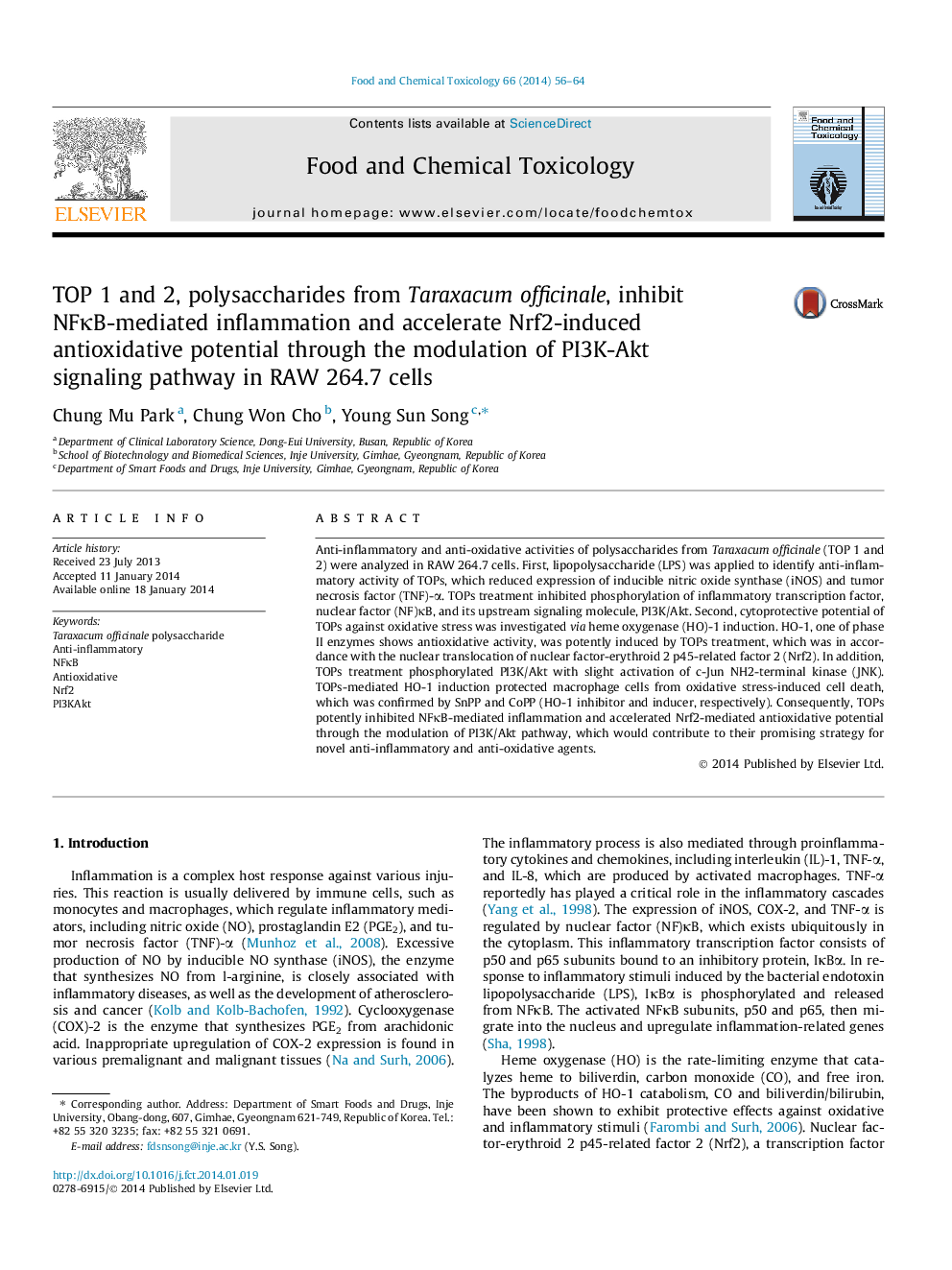| Article ID | Journal | Published Year | Pages | File Type |
|---|---|---|---|---|
| 5850716 | Food and Chemical Toxicology | 2014 | 9 Pages |
â¢TOPs inhibited iNOS and TNF-α expression through NFκB modulation in LPS-stimulated RAW 264.7 cells.â¢Induced HO-1 expression by TOPs treatment protected macrophages against oxidative stress-mediated cell death.â¢TOPs inhibited inflammation and accelerated antioxidative potential through PI3K-Akt pathway.
Anti-inflammatory and anti-oxidative activities of polysaccharides from Taraxacum officinale (TOP 1 and 2) were analyzed in RAW 264.7 cells. First, lipopolysaccharide (LPS) was applied to identify anti-inflammatory activity of TOPs, which reduced expression of inducible nitric oxide synthase (iNOS) and tumor necrosis factor (TNF)-α. TOPs treatment inhibited phosphorylation of inflammatory transcription factor, nuclear factor (NF)κB, and its upstream signaling molecule, PI3K/Akt. Second, cytoprotective potential of TOPs against oxidative stress was investigated via heme oxygenase (HO)-1 induction. HO-1, one of phase II enzymes shows antioxidative activity, was potently induced by TOPs treatment, which was in accordance with the nuclear translocation of nuclear factor-erythroid 2 p45-related factor 2 (Nrf2). In addition, TOPs treatment phosphorylated PI3K/Akt with slight activation of c-Jun NH2-terminal kinase (JNK). TOPs-mediated HO-1 induction protected macrophage cells from oxidative stress-induced cell death, which was confirmed by SnPP and CoPP (HO-1 inhibitor and inducer, respectively). Consequently, TOPs potently inhibited NFκB-mediated inflammation and accelerated Nrf2-mediated antioxidative potential through the modulation of PI3K/Akt pathway, which would contribute to their promising strategy for novel anti-inflammatory and anti-oxidative agents.
